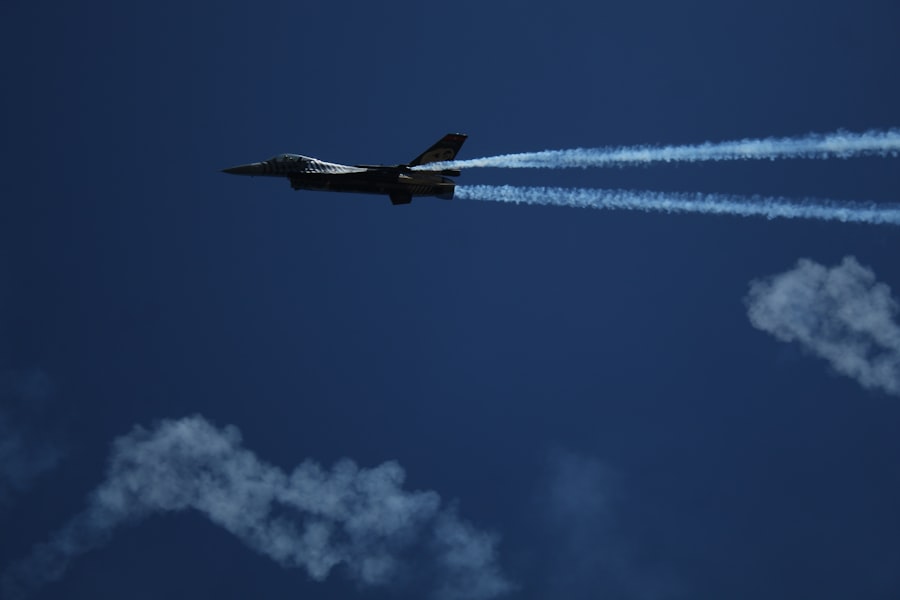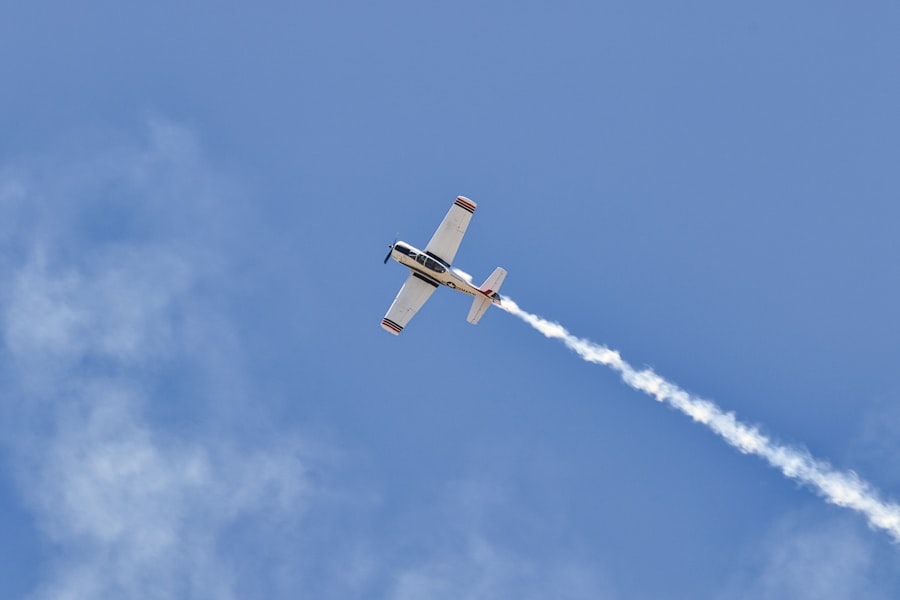Aeronautical medicine, a specialized branch of medicine, focuses on the health and well-being of individuals involved in aviation, including pilots, aircrew, and passengers. This field encompasses a wide range of medical considerations, from the physiological effects of altitude and reduced atmospheric pressure to the psychological impacts of long-duration flights. The primary goal of aeronautical medicine is to ensure that those who operate aircraft are fit to fly, thereby enhancing safety and efficiency in aviation operations.
As air travel continues to grow globally, the importance of understanding the unique medical challenges faced by aviators and passengers has never been more critical. The discipline of aeronautical medicine integrates various medical fields, including physiology, psychology, and environmental medicine. It addresses issues such as hypoxia, decompression sickness, and the effects of cosmic radiation on human health.
Furthermore, it examines how factors like fatigue, stress, and circadian rhythms can influence performance in high-stakes environments. As aviation technology evolves and flight durations increase, the need for comprehensive medical assessments and interventions becomes paramount. This article delves into the evolution of aeronautical medicine, its impact on aviation safety, technological innovations, and its role in space travel, while also addressing the challenges and future directions in this vital field.
Key Takeaways
- Aeronautical medicine focuses on the health and safety of aircrew and passengers in aviation environments.
- The field has evolved significantly, improving understanding of physiological effects of flight.
- Advances in aeronautical medicine have directly enhanced aviation safety and accident prevention.
- New technologies are driving innovations in monitoring and treating flight-related medical conditions.
- Aeronautical medicine plays a critical role in addressing health challenges in space travel and future exploration.
Evolution of Aeronautical Medicine
The roots of aeronautical medicine can be traced back to the early days of aviation in the 20th century. As aircraft began to take to the skies, it became evident that flying posed unique health risks to pilots and crew members. The first significant strides in this field were made during World War I when military aviators experienced various physiological challenges due to altitude and speed.
The need for specialized medical knowledge led to the establishment of aeromedical research programs aimed at understanding these challenges better. Pioneering studies focused on the effects of high altitude on human physiology, leading to the development of protocols for oxygen use and cabin pressurization. By the mid-20th century, aeronautical medicine had evolved into a recognized discipline with dedicated research institutions and training programs.
The establishment of organizations such as the Aerospace Medical Association in 1929 marked a significant milestone in promoting research and education in this field. The introduction of jet aircraft in the 1950s further accelerated advancements in aeronautical medicine as pilots faced new challenges associated with higher altitudes and increased speeds. Research during this period led to improved understanding of issues like spatial disorientation and G-forces, which have become critical components of pilot training and safety protocols.
Impact of Aeronautical Medicine on Aviation Safety

The contributions of aeronautical medicine to aviation safety are profound and multifaceted. One of the most significant impacts has been the establishment of rigorous medical certification standards for pilots and aircrew. These standards ensure that individuals operating aircraft are physically and mentally fit to perform their duties, thereby reducing the risk of accidents caused by medical incapacitation.
Regular health assessments, including vision tests, cardiovascular evaluations, and psychological screenings, are integral to maintaining high safety standards in aviation. Moreover, aeronautical medicine has played a crucial role in developing safety protocols that address specific health risks associated with flying. For instance, understanding the effects of hypoxia has led to the implementation of oxygen systems in aircraft cabins, ensuring that pilots can maintain cognitive function at high altitudes.
Additionally, research into fatigue management has resulted in regulations governing flight duty periods and rest requirements for crew members. These measures are designed to mitigate the risks associated with human error, which remains a leading cause of aviation accidents.
Innovations in Aeronautical Medicine Technology
| Innovation | Description | Impact on Aeronautical Medicine | Year Introduced | Key Metrics |
|---|---|---|---|---|
| Wearable Physiological Monitors | Advanced sensors integrated into pilot suits to continuously monitor vital signs such as heart rate, oxygen saturation, and stress levels. | Improved real-time health monitoring and early detection of pilot fatigue or hypoxia. | 2018 | Accuracy: 98%, Response Time: <1 sec, Battery Life: 24 hours |
| Hypoxia Detection Systems | Automated systems that detect early signs of oxygen deprivation and alert pilots or initiate corrective measures. | Reduced incidence of hypoxia-related incidents in high-altitude flights. | 2020 | Detection Sensitivity: 95%, False Alarm Rate: 2% |
| Virtual Reality (VR) Training Simulators | Immersive VR environments for pilot training on physiological stress management and emergency medical procedures. | Enhanced pilot preparedness and response to medical emergencies during flight. | 2019 | Training Effectiveness: +30% retention, User Satisfaction: 90% |
| Automated Emergency Medical Kits | Smart medical kits equipped with sensors and AI to guide pilots through emergency medical interventions. | Increased success rates in managing in-flight medical emergencies. | 2021 | Intervention Success Rate: 85%, User Guidance Accuracy: 92% |
| Advanced Cabin Air Quality Systems | Systems that monitor and regulate cabin air composition to optimize oxygen levels and reduce contaminants. | Improved passenger and crew health, reducing fatigue and respiratory issues. | 2017 | Oxygen Level Stability: ±1%, Contaminant Reduction: 40% |
Technological advancements have significantly transformed aeronautical medicine over the years, enhancing both research capabilities and practical applications. One notable innovation is the use of simulation technology for training purposes. Flight simulators equipped with advanced physiological modeling allow pilots to experience various scenarios that mimic real-life challenges they may face during flight.
This immersive training helps prepare aviators for situations such as hypoxia or spatial disorientation without exposing them to actual risk. Another area where technology has made a substantial impact is in telemedicine. With the advent of digital communication tools, remote medical consultations have become increasingly feasible for pilots and aircrew stationed far from medical facilities.
This capability allows for timely assessments and interventions when health issues arise during long-haul flights or in remote locations. Furthermore, wearable technology is gaining traction in aeronautical medicine; devices that monitor vital signs such as heart rate, oxygen saturation, and stress levels can provide real-time data to both pilots and medical professionals. This information can be invaluable for making informed decisions about fitness to fly.
Role of Aeronautical Medicine in Space Travel
As humanity ventures further into space exploration, aeronautical medicine’s role has expanded beyond traditional aviation into the realm of space travel. The unique environment of space presents a host of medical challenges that require specialized knowledge and expertise. For instance, microgravity affects bodily functions such as fluid distribution, muscle atrophy, and bone density loss.
Understanding these effects is crucial for ensuring the health and performance of astronauts during extended missions. Research conducted on the International Space Station (ISS) has provided valuable insights into how prolonged exposure to microgravity impacts human physiology. Studies have shown that astronauts experience changes in vision due to fluid shifts within the body, leading to increased intracranial pressure.
Aeronautical medicine professionals are actively involved in developing countermeasures to mitigate these effects, such as exercise regimens designed to maintain muscle strength and bone density during long-duration missions. Additionally, psychological support systems are being implemented to address mental health challenges associated with isolation and confinement during space travel.
Challenges and Future Directions in Aeronautical Medicine

Despite significant advancements in aeronautical medicine, several challenges remain that require ongoing attention and innovation. One pressing issue is the increasing complexity of modern aircraft systems and their implications for pilot health. As cockpit technology becomes more sophisticated, there is a growing need for pilots to possess not only technical skills but also cognitive resilience to manage information overload effectively.
Research into cognitive ergonomics is essential for designing cockpit interfaces that enhance pilot performance while minimizing stress. Another challenge lies in addressing the health needs of an aging pilot population. As many experienced pilots continue to fly well into their later years, it is crucial to develop age-appropriate medical assessments that consider age-related physiological changes without compromising safety standards.
This necessitates ongoing research into how aging affects performance in aviation settings and the development of tailored training programs that accommodate these changes.
Training and Education in Aeronautical Medicine
Training and education are fundamental components of aeronautical medicine, ensuring that medical professionals are equipped with the knowledge necessary to address the unique challenges faced by aviators. Specialized training programs have emerged worldwide, focusing on various aspects of aeromedical practice, including flight physiology, aerospace psychology, and aviation safety regulations. These programs often involve collaboration between medical schools, aviation authorities, and military organizations to create comprehensive curricula that address both theoretical knowledge and practical skills.
Continuing education is also vital in this rapidly evolving field. Medical professionals working in aeronautical medicine must stay abreast of new research findings, technological advancements, and regulatory changes that impact aviation health standards. Conferences hosted by organizations like the Aerospace Medical Association provide platforms for professionals to share knowledge, discuss emerging trends, and collaborate on research initiatives aimed at improving aviation safety.
Collaboration and Partnerships in Aeronautical Medicine
Collaboration is a cornerstone of progress in aeronautical medicine, as it brings together experts from diverse fields to address complex challenges effectively. Partnerships between aviation authorities, medical institutions, research organizations, and industry stakeholders are essential for advancing knowledge and developing best practices in this domain. For example, collaborations between NASA and various universities have led to groundbreaking research on human factors in space travel, resulting in improved training protocols for astronauts.
International cooperation is also crucial as air travel becomes increasingly globalized. Organizations such as the International Civil Aviation Organization (ICAO) work to establish global standards for aviation safety and health practices. By fostering collaboration among member states, ICAO helps ensure that best practices in aeronautical medicine are disseminated worldwide, ultimately enhancing safety across international air travel networks.
In conclusion, aeronautical medicine stands at the intersection of healthcare and aviation safety, playing a pivotal role in ensuring that those who take to the skies are fit for duty while addressing the unique medical challenges posed by flight. As this field continues to evolve through research, technological innovation, education, and collaboration among stakeholders, it will undoubtedly contribute significantly to the future of safe air travel and space exploration.




